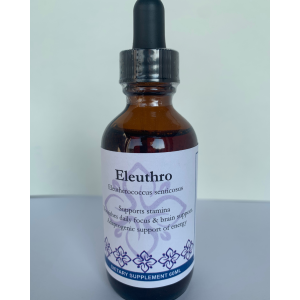DeMystifying Ayurveda: It is not all Lentils and Lassis
Most people have been exposed to Ayurveda through either yoga or indian food. While any exposure is good exposure, Ayurveda is much more than how it is portrayed in Pop culture. So what is ayurveda beyond lentils and lassis? First thing is that Ayurveda is not a an exclusively vegetarian science. The strong cultural underpinnings of India and it strong fascination with vegetarianism has led many people to believe that Ayurveda recommends vegetarianism. The essence of Ayurveda is finding a diet that is in harmony with the bioenergetic principles that make you up. It is true that from a karmic perspective, vegetarianism is probably a good choice.

Yet for many individuals, who have extremely busy lives with lots of movement and activity, eating a vegetarian diet can be difficult, it can also be challenging for individuals who have small intestinal bacterial overgrowth (SIBO).
Another common misconception in terms of Ayurveda is that you have to eat Indian food. While indian food does have Ayurvedic underpinnings, it is not really Ayurvedic. You wouldn’t believe how many times I have been told that someone eats Ayurvedically because they go to the Indian buffet for lunch. The essence of an Ayurvedic diet is that there is no such thing. In a world where there is a new dietary strategy every day or monthly or yearly. Perhaps this is the reason that the Ayurvedic approach has not taken off. The essence of an Ayurvedic diet is to be in touch with your body and to experience the way food affects you. As each of us is unique, there is no one size fits all approach and it requires time, experimentation and feedback in order to find a diet that is right for you.
So what is Ayurveda? What makes Ayurveda unique and different? There are probably a thousand different ways that Ayurveda is different. For me, the uniqueness that Ayurveda embodies, is the depth of listening that is possible. As an educator and speaker, my primary goal is to ͞know my audience. This is the essence of Ayurveda. To develop a deep understanding of the individual. That is why Ayurveda employs so many diagnostic techniques in order to gain accurate information of the physiology of the client. Many of these techniques are non-invasive as well. In a typical session you will experience pulse diagnosis, tongue diagnosis, health history forms, questioning and palpation. Although this may seem similar to other health care professionals, the Ayurvedic lens incorporates the physical, emotional, mental and spiritual.
Many other systems do not have a dynamic framework in which to incorporate and assess these four legs of the table of diagnosis.
So if you are looking to put the seemingly disparate pieces of your health story together, then it is time to visit an Ayurvedic professional. It is time to learn how you can support all of these legs and to understand more completely how the mind and the body work together.
Book A Session
-
Product on sale
 Three Week Lung and Large Intestine Community Cleanse ClassOriginal price was: $299.00.$275.00Current price is: $275.00.
Three Week Lung and Large Intestine Community Cleanse ClassOriginal price was: $299.00.$275.00Current price is: $275.00. -
Product on sale
 Codonopsis TinctureOriginal price was: $19.99.$9.99Current price is: $9.99.
Codonopsis TinctureOriginal price was: $19.99.$9.99Current price is: $9.99. -
Product on sale
 Eleuthro (Siberian Ginseng) TinctureOriginal price was: $19.99.$9.99Current price is: $9.99.
Eleuthro (Siberian Ginseng) TinctureOriginal price was: $19.99.$9.99Current price is: $9.99. -
Product on sale
 Gentian TinctureOriginal price was: $19.99.$9.99Current price is: $9.99.
Gentian TinctureOriginal price was: $19.99.$9.99Current price is: $9.99. -
Product on sale
 Honeysuckle TinctureOriginal price was: $19.99.$9.99Current price is: $9.99.
Honeysuckle TinctureOriginal price was: $19.99.$9.99Current price is: $9.99. -
Product on sale
 Angelica TinctureOriginal price was: $19.99.$9.99Current price is: $9.99.
Angelica TinctureOriginal price was: $19.99.$9.99Current price is: $9.99. -
Product on sale
 Ashok TinctureOriginal price was: $19.99.$9.99Current price is: $9.99.
Ashok TinctureOriginal price was: $19.99.$9.99Current price is: $9.99. -
Product on sale
 Astragalus TinctureOriginal price was: $19.99.$9.99Current price is: $9.99.
Astragalus TinctureOriginal price was: $19.99.$9.99Current price is: $9.99. -
Product on sale
 Bibhitaki TinctureOriginal price was: $19.99.$9.99Current price is: $9.99.
Bibhitaki TinctureOriginal price was: $19.99.$9.99Current price is: $9.99.




